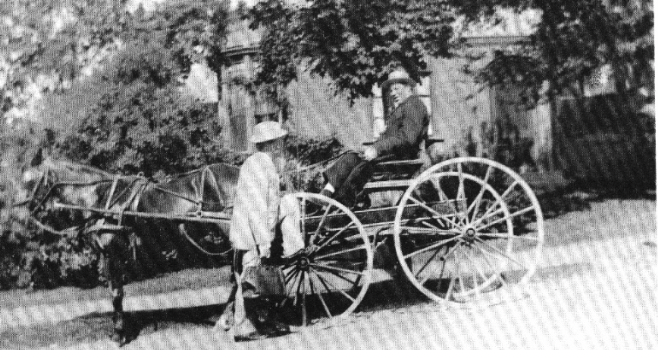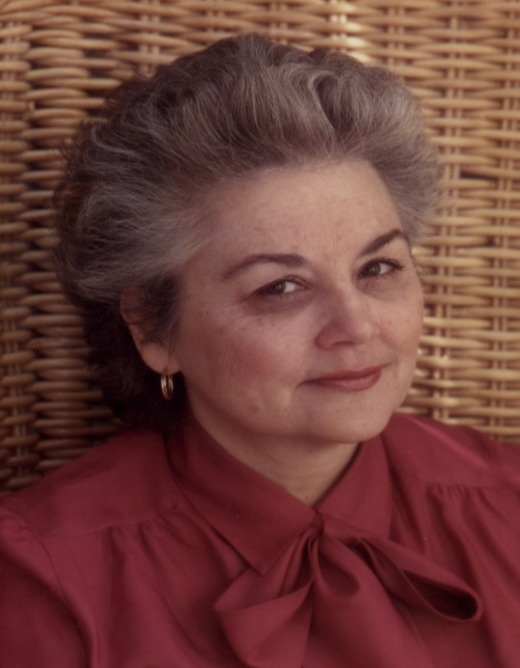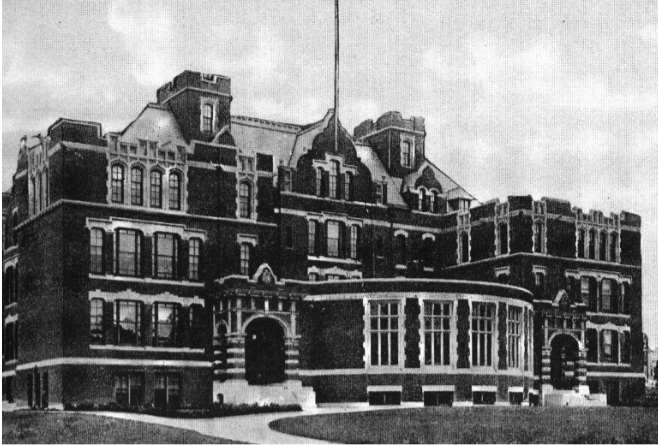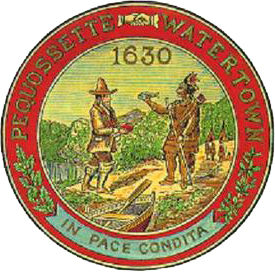
Photo courtesy of the Watertown Free Public Library Tom Gavin and Charles Brigham in front of Mr. Brigham’s house on Garfield Street
The following article is from the Historical Society of Watertown’s April 2000 newsletter, The
Town Crier. The piece is being republished as part of the series on local history appearing each Saturday on Watertown News.
I’m sure many of you Watertown history fans remember the “Echoes” column that Sigrid Reddy Watson wrote for several years for the Watertown TAB/Press beginning in 1997. Her well-written columns have helped to educate the community on several historic aspects of Watertown and is sorely missed by history-buffs and newly interested Watertown history-aficionados alike.

There are so many markers in Watertown denoting the former locations of important buildings from the past that sometimes we despair of finding anything still standing that recalls the events and prominent individuals that made important contributions to the town’s history. Such is not the case with the architect Charles Brigham and the buildings he designed, many of which still stand and are tributes to his skill in building design. His influence was felt in other spheres as well.
Charles Brigham was born in the old Coolidge Tavern on Galen Street in 1841, a descendant of Thomas Brigham, one of the town’s early settlers, who came from England in 1635 and is said to have lived near the Cambridge line and on the river, and who “was fined ten shillings in 1651 for not regulating his hogs.” Brigham’s birthplace was razed in the 1890’s when the property was bought by the Boston Elevated Street Railway for its carbarns.
Brigham, who became an architect of note known far beyond the borders of Watertown, was a loyal son of the town, playing an important part in it all his life. He was in the first graduating class of the new high school with only six others, all girls, in 1857, and must have been an apt student, for he was then only sixteen.
By the outbreak of the Civil War in 1861, Watertown, which had been for many years a hotbed of abolitionist, temperance, and feminist thought, bolstered by such business interests as the Walker and Pratt foundry, and the United States Arsenal, was ready to participate. Many young men joined the army and the navy, and in the enthusiasm for the war Watertown men formed Company K of the 16th Massachusetts Infantry Regiment, which left for Baltimore in August of 1861. Among them were their captain, Joseph Crafts, the Otis brothers, and Charles Brigham. They joined the Army of the Potomac in the drive toward Richmond, and were involved in the Battles of Bull Run and Gettysburg.
Charles Brigham returned from the war in 1863 after nine months’ service with Company K, and the company was welcomed with a parade, speeches and refreshments. Brigham established an architectural office in Boston and became a well-known figure in town life, serving as Chairman of the Board of Trustees for the Public Library, a member of the School Committee, a Selectman, a member of the Historical Society, and a director of the Union Market National Bank, which he helped found in 1873. (The bank’s name reflected its association with the Union Market Stockyards and furnished the cash for local business payrolls, for in those days workers were paid not by check but in cash.)
Photo courtesy of the Watertown Free Public Library
Watertown High School, 1914, designed by Charles Brigham.
Charles Brigham’s association with John Hubbard Sturgis in 1866 prepared him for his profession as an architect. The partnership designed and built a number of public buildings and houses in Boston and Newport, and in the ’60s he helped the School committee to solve the space problem posed by population growth by drawing up plans for the Francis School (named for Convers Francis, the long-time minister of the First Parish), which was built on Spring Street of glazed yellow brick with arched entrances and a slate roof.
Brigham took pride in the history of Watertown, and in 1871, when the Fowle House was threatened with demolition at its location on Mt. Auburn Street, he bought it and had it moved to its present location on Marshall Street. In 1888 he and a group of friends led by Alfred Hosmer, and including William Ingraham, the town clerk; Dr. Julian Mead; Solon Whitney, the librarian; Dr. Bennett Davenport of “Fountain Hill;” and the Reverend Edward Rand of the Church of the Good Shepherd, formed the Historical Society, the purpose of which was to preserve the town’s historical records and publish the members’ papers on historical subjects. Several of these men became Brigham’s neighbors on Garfield Street when he developed the area, where he also designed several houses. It was due to Brigham’s foresight that the Fowle House, which he had had moved, was later purchased from him by the Historical Society, becoming its headquarters in 1922.
Charles Brigham had a distinguished career in architecture. In his partnership with Sturgis he produced the designs for the Museum of Fine Arts’ old building in Copley Square and the Church of the Advent on Brimmer Street, as well as mansions in the Back Bay. He is credited with the design of the extension of Boston’s State House, the addition to the Maine State Capitol building, and the Christian Science Church. In 1892, the Watertown Savings Bank moved from the Noyes Block, which it had occupied since 1870, into a new building designed by Charles Brigham which had cost $21,000 and stood until 1928, when it was replaced.

The most visible edifice in Watertown designed by Brigham is the old East Junior High School building on Mount Auburn Street now being considered for alternative use. (Note: the former East Junior High School is now the Brigham House assisted living center). Designed like a medieval fortress, in its time it was considered a beautiful and useful building, the plans for which were donated to the town by Brigham for a new high school, and was a replica of one he had designed for Fairhaven. Due to his generosity to his native town, the high school was built with a town appropriation of $100,000, and opened in 1914 with 219 pupils. Perhaps Brigham’s most visible contribution was his design of the Town seal, showing Roger Clap offering an Indian a biscuit in exchange for a bass.